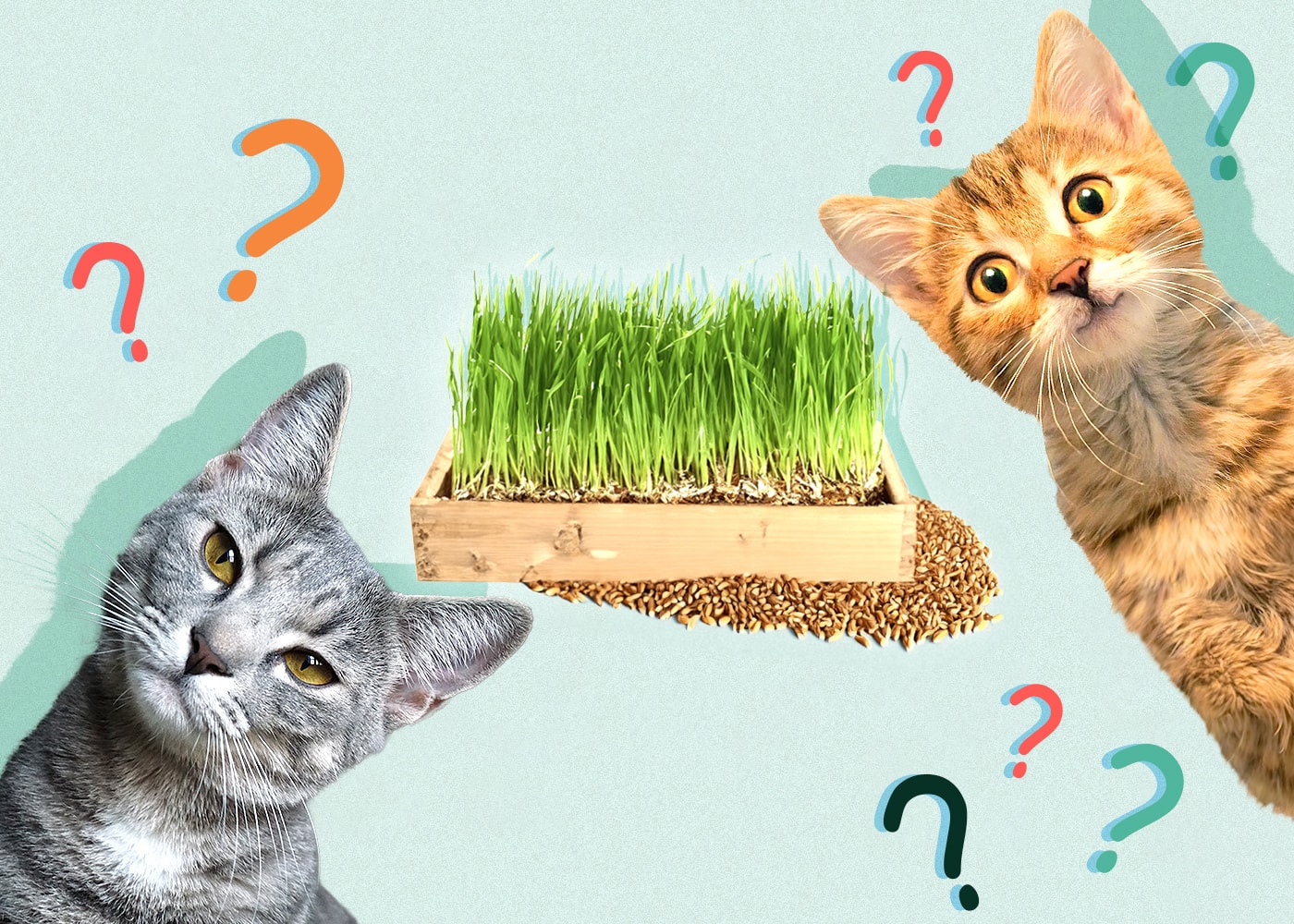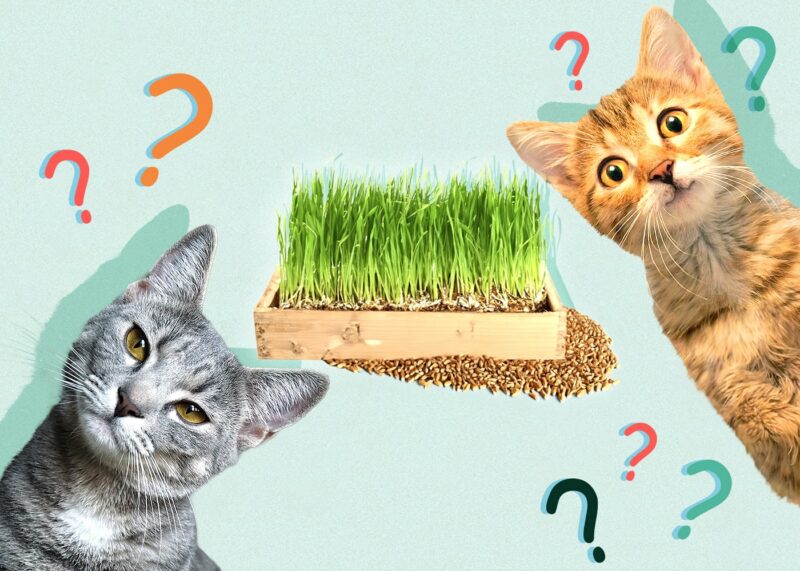Click to Skip Ahead
“Why is my cat eating grass?” Veterinarians encounter this question a lot. Though it might sound unlikely, cats can eat wheatgrass! Since they are classified as obligate carnivores, you might be concerned at the sight of one nibbling grass comfortably. Surprise! Cats can eat, digest, and draw nutritional benefits from plants.
There is a theory that explains that cats used to be omnivores prior to their domestication and that they only became obligate carnivores because their diet, after domestication, omitted green nutrition. This article looks to breakdown some of the reasons why cats eat wheatgrass and how it benefits them in the long run.

What Does Wheatgrass Contain?
Wheatgrass is the young shoot of a wheat plant that is harvested before the grain sprouts. This makes them rich in chlorophyll, vitamins, and minerals. Some of the minerals and vitamins found in wheatgrass include carotene, vitamins A, E, and C. In addition, the grass has a high level of plant protein.
- Pro Tip: Consider the younger wheatgrass plants since they have a higher protein concentration level.
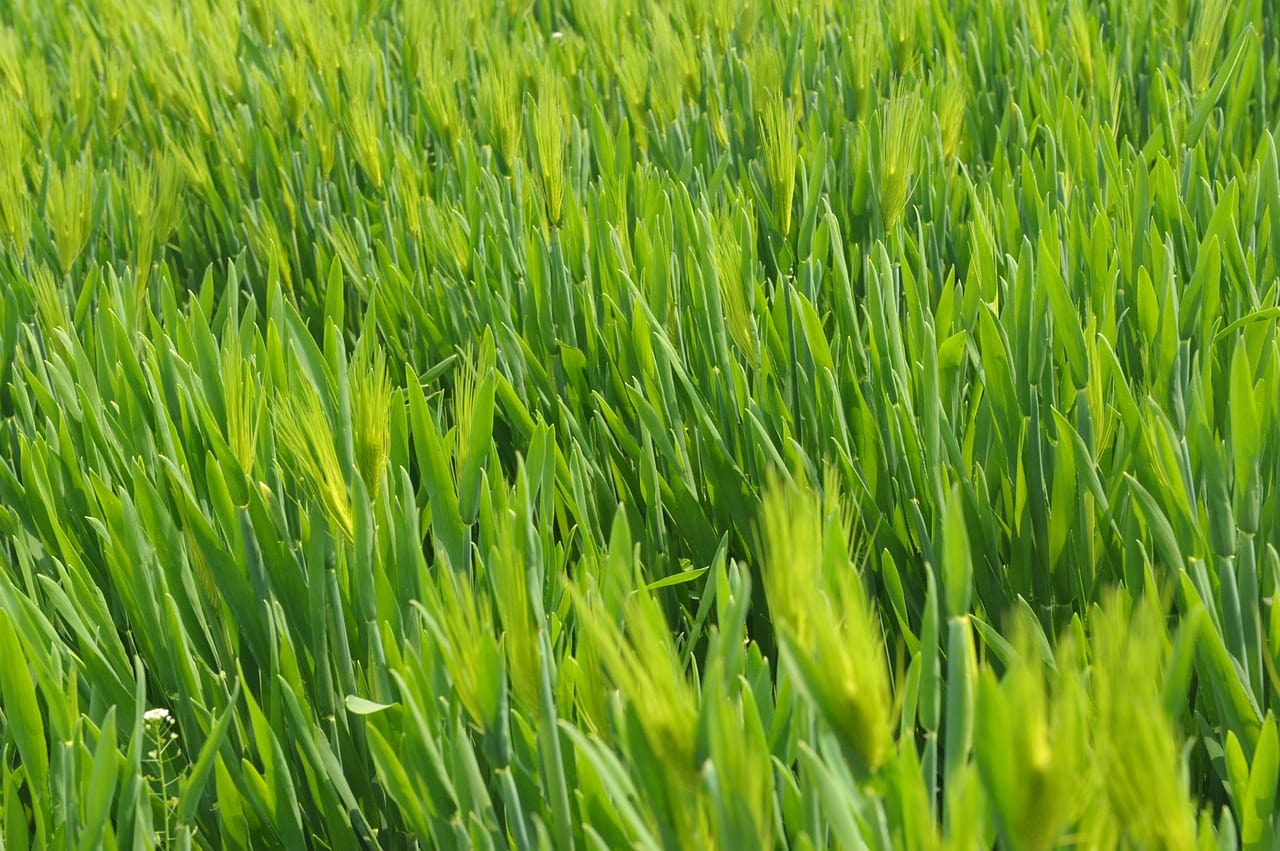
How Much Wheatgrass Should a Cat Consume?
Generally, cats aren’t wired to consume a lot of greens. Though they lack certain enzymes that allow them to digest veggies well, they can consume wheatgrass in small portions. Even though they tend to enjoy it, do not get the idea that it can replace their usual nutritional meals.
Though nothing has been proven, stick to the idea that cats don’t have enzymes to break down greens; they’re predatory by nature. And they should only consume a few portions of the grass. Also, whether you choose to feed it to the cat daily or every other day, it will be okay.
How Much Wheatgrass Can My Cat Have?
Your cat should be able to consume small volumes of wheatgrass every day. Since it is hard to quantify the number of clippings they can have, you might want to discuss this withyour vet. You also need to ensure that there aren’t fertilizers or pesticides on the wheatgrass your cat eats.
Advantages of Feeding My Cat with Wheatgrass
A few portions of wheatgrass propels your feline’s well-being, both physically and mentally. Here are some of the reasons why:
1. Boosts Immune System
As you’ve already seen, wheatgrass has many nutrients that are helpful to the cat’s immune system. These minerals and vitamins will go a long way in saving you a trip to the vet.
2. Weight Loss
This might sound funny until you have a lazy and chubby cat for a pet. Getting it to shed off the weight can be quite an uphill task. As you focus on changing the cat’s diet, let it snack on some wheatgrass.
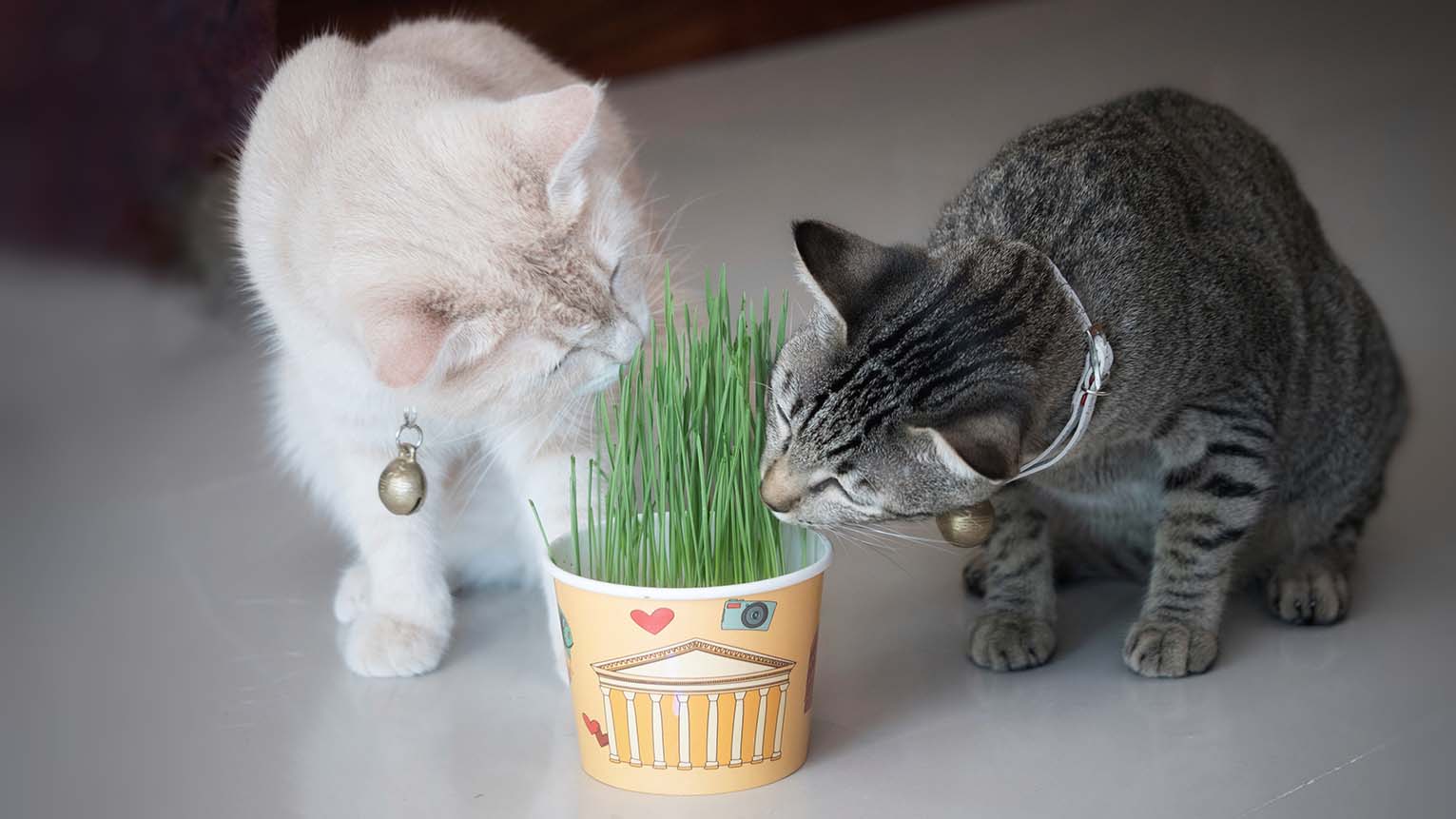
3. Stimulation
Cats are generally meant to be playful and active. If you notice that its usual routine is becoming boring, you can introduce the wheatgrass to the cat’s meal for a bit of stimulation.
4. Dental Health
Why feed your cat snacks that can cause tooth decay and cavities when wheatgrass is a much cheaper and healthier option? This way, you will worry less about their dental health. Treating dental issues in cats will leave a massive dent in your bank account.
5. Slows Down the Aging Process
Chlorophyll is one of the nutrients in wheatgrass, and it is proven to be a blood booster that slows down the aging process. Your cat will not only generate more potent blood but also look younger.
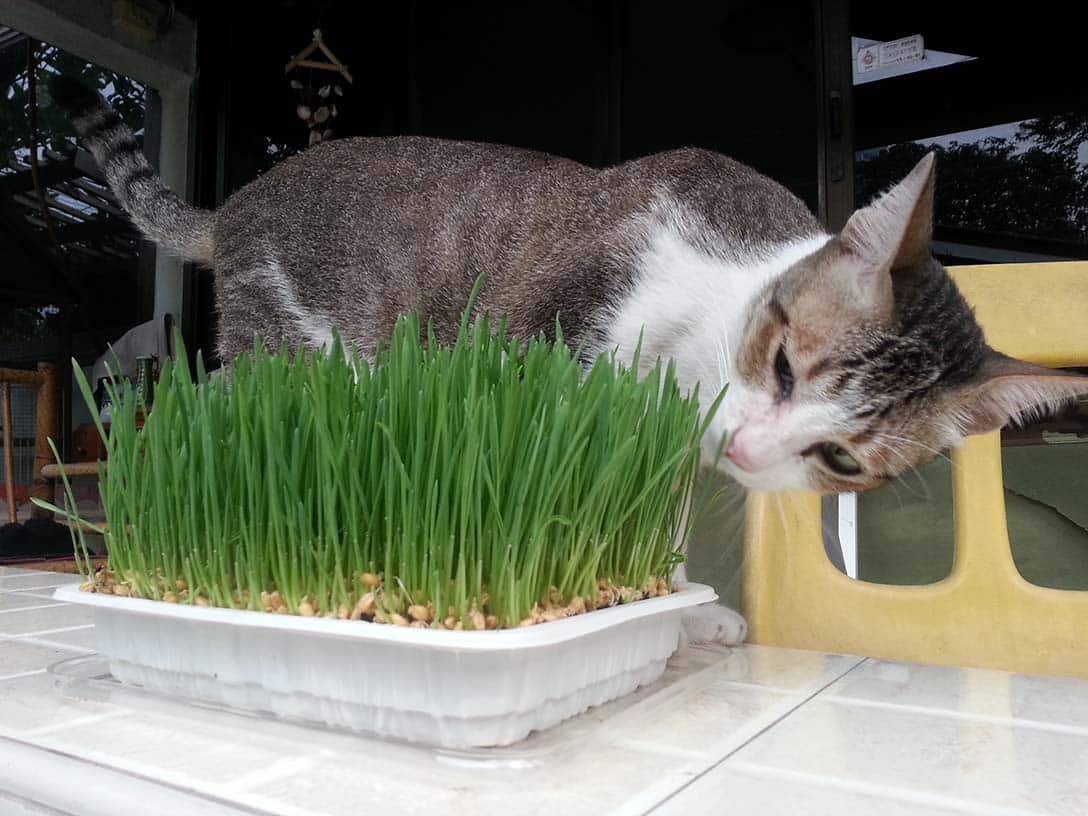
6. Night Vision
Another reason your cat needs to be munching on wheatgrass is that it improves night vision, courtesy of the vitamin A in the grass.
7. Helps with Kidney Disease
When you notice that your cat has an increased appetite for greens, it may be because they have a health issue like kidney disease. If this happens to be the case, consult your vet before making any major nutritional changes.
When to Worry About Cats Eating Wheatgrass
As much as cats gain a lot from wheatgrass, here are some disadvantages of the same:
1. Green Plants Can Be Toxic
As stated before, cats aren’t designed to consume veggies. That means the intake should be limited. Also, once they are familiar with the grass, they may end up devouring any green plant within their vicinity. The other plants may harm your cat, and too much wheatgrass isn’t good for your cat’s general well-being.
2. Vomiting and Pooping Gastric Disorders
Your little feline friend may vomit, have diarrhea, or poop more frequently if too much wheatgrass is consumed.
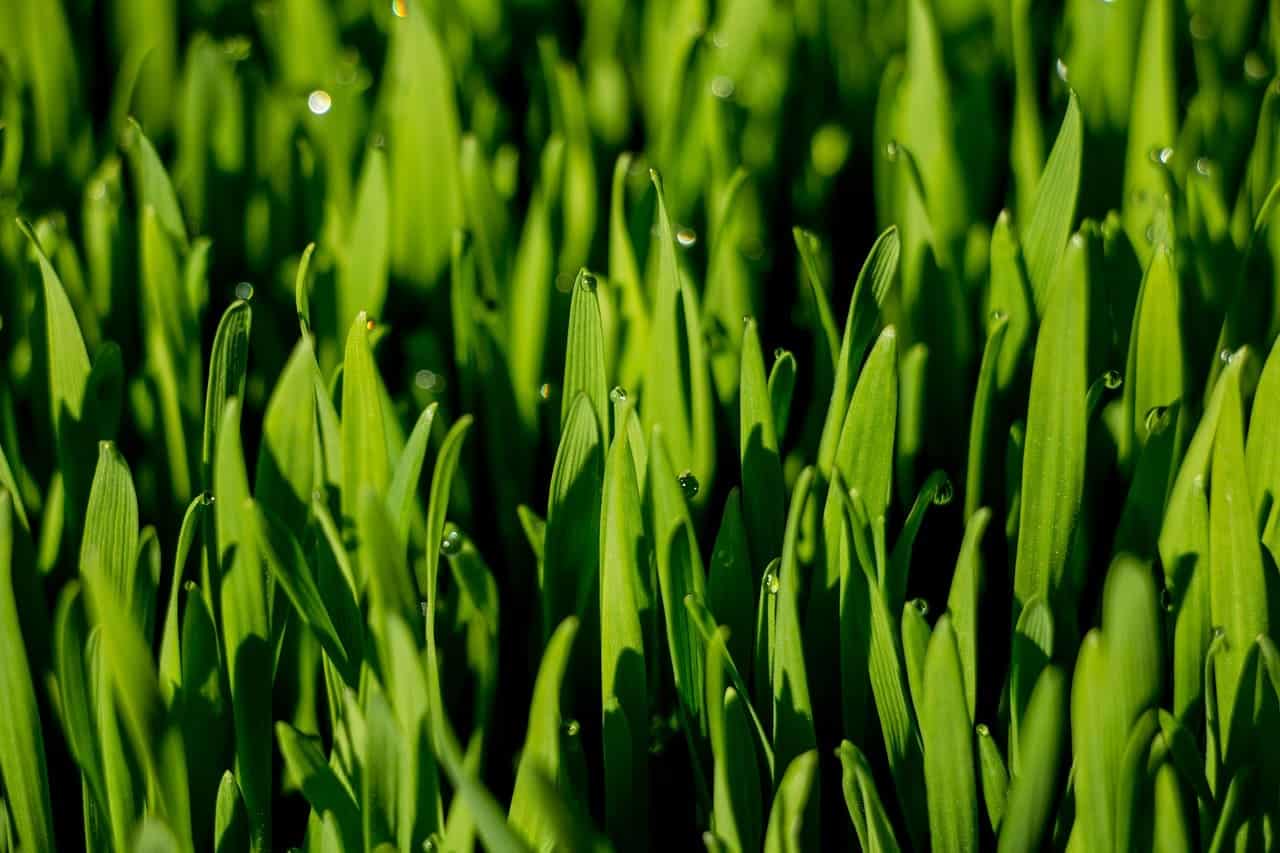
What About Gluten Intolerance?
Contrary to common belief, wheatgrass doesn’t contain gluten in its core structure. Remember, the grass is harvested in the early stages before the gluten-forming component matures. So, there’s no cause for alarm no matter how often you feed your cat with wheatgrass.
How to Feed Wheatgrass to a Cat
You can either have the cat eat it raw or juice it for the cat to drink. However, the cat may find the juiced version a bit difficult to take.
Can Cats Eat Other Grass?
Cats can munch on almost any other grass, including lawn grass. However, they generally love wheatgrass, and it is much safer and more nutritionally packed than the rest.
Is Wheatgrass Catgrass?
Wheatgrass is an example of cat grass. You can also get cat grass from other plants like barley, bluegrass, oats, flax, fescue, and rye. When these grass types are used to make cat products, the end result is what we refer to as cat grass.
What Kind of Cats Can Eat Wheatgrass?
Wheatgrass is suitable for all types of cats, regardless of their age and breed. It is also safe for kittens and felines with ailments like diabetes since it doesn’t contain a lot of carbohydrates. Even though all cats can consume wheatgrass, that shouldn’t be a reason to go all out with it. Don’t overfeed it or replace it with the main diet.
Learning about what your cat can and cannot eat is a crucial part of keeping them happy and healthy! Choosing a bowl to serve cat-friendly foods in is another important decision pet owners face. Satisfy the specific needs of your cat with the innovative design of the Hepper NomNom Cat Bowl. Learn why it’s our (and our cats!) favorite food and water dish here. At Catster, we’ve admired Hepper for many years and decided to take a controlling ownership interest so that we could benefit from the outstanding designs of this cool cat company!
Conclusion
Wheatgrass is safe for cats and can act as a better alternative in place of other snacks. It can also be given alongside the main diet. It can have positive effects on your cat’s health, and you may save more money by reducing your veterinary expenses.
See Also:
Featured Image Credit: Pixabay

